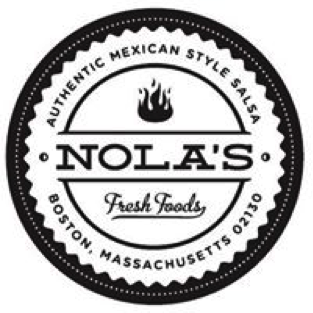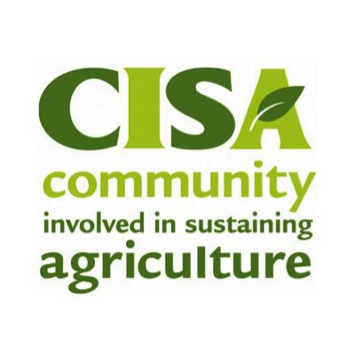 Getting your product into a store or restaurant is exciting, but once you’re on the shelves, how do you make sure that you’re there to stay?
Getting your product into a store or restaurant is exciting, but once you’re on the shelves, how do you make sure that you’re there to stay?
Here are some tips from a recent panel that Good Egg Marketing moderated at the Sustainable Business Network of Massachusetts (SBN) Local Food Trade Show in Boston, Mass. While this article focuses on farms and specialty food businesses, the principles about how to keep customers happy apply to most businesses and organizations.
Getting In
Despite intense consumer interest in buying local, getting your local food products into specialty food stores, restaurants, and institutions is challenging. Stores like Cambridge Naturals in Cambridge, Mass. get hundreds of requests a week to carry products.
Find a Niche
Finding a distinctive niche to fill is just as important for stores and restaurants as it is for the businesses that sell to them.
There are gazillion salsas,  cookies, and ice creams already on the market, yet new products get on the shelves every day. How?
cookies, and ice creams already on the market, yet new products get on the shelves every day. How?
When New Orleans native Sherie Grillon moved up to Boston, she noticed that no one was making a fresh traditional Mexican style salsa fresca, so she started Nola’s Fresh Foods in 2011 to fill that niche. Being able to differentiate her product from other local salsas helped her get into specialty food stores and restaurants and she’s now selling to Whole Foods and Star Markets.
River Valley Coop in Northampton, Mass. faces heavy competition from supermarkets and Whole Foods Markets carrying organic and natural products, so they’re focused on being “hyperlocal.”

River Valley Produce Manager Henry Kryeski embodies the store’s slogan, “Wild about Local.”
Kryeski goes out of his way to work with as many farmers as he can, but with so many western Mass. farmers growing “so many great things,” he can’t buy kale from everyone.
“That’s where the word niche comes into play,” Kryeski says. He gets the best quality and avoids overlap among the 200+ items he carries from more than 30 local farmers by taking the time to figure out which farmer is best at growing the products he wants to buy.
Kryeski meets with farmers off-season to discuss what they’ll grow for River Valley the next year, so everyone can plan ahead.

Cambridge Naturals has also been adept at finding a niche. They started out as a full-scale natural foods store in 1974, when the natural foods movement was just getting going, but by the mid-1990s, the industry had become extremely competitive.
In order to survive, Cambridge Naturals rebranded themselves as a natural health store with a carefully curated selection of groceries. Their commitment to sourcing local, organic and ethical products, supporting the community, and providing excellent customer support has enabled them to thrive in the niche they carved out for themselves.
Look for the Right Venues
The best places to sell your produce and products are where the owners, buyers, and customers care about supporting local farmers and food producers, not necessarily the places with highest annual sales volume. Stores like Cambridge Naturals pride themselves on being the first to bring in a new product, so they’ll go out of their way to support small, independent local businesses.
“We go after exciting unique products with a good story to tell,” says Cambridge Naturals’ second-generation co-owner, Emily Kanter. “We’re often the first stop for a lot of brands that haven’t been elsewhere yet. We like to have products that aren’t in every store. “
Nola’s built its salsa business by establishing relationships with supportive stores. “We can sell four times as much at a small owner-operated local store than at the big natural foods supermarkets, because the customers know and trust the staff,” says Grillon.
 Community Involved in Sustaining Agriculture (CISA) in South Deerfield, Mass. was the first “Buy Local” organization in the country. CISA’s Local Hero Program Manager, Devon Whitney-Deal, works with over 425 farmers, retailers, specialty food producers, institutions and others who sell and support local food. She helps their members find the right venues to sell their products.
Community Involved in Sustaining Agriculture (CISA) in South Deerfield, Mass. was the first “Buy Local” organization in the country. CISA’s Local Hero Program Manager, Devon Whitney-Deal, works with over 425 farmers, retailers, specialty food producers, institutions and others who sell and support local food. She helps their members find the right venues to sell their products.
“Be creative when you’re looking for buyers,” advises Whitney-Deal. For example, if you want to sell to institutions, don’t just approach your local schools, colleges and hospitals. Some local food producers in western Mass. sell to assisted living communities, because “their residents are demanding local food,” she says. Wherever there are eaters, there are potential customers.
Be Persistent
Creating and maintaining strong relationships with the owners, buyers, and customers is essential to getting in and staying in. Most buyers are sympathetic to new entrepreneurs, but they can be hard to get reach, because they spend so much time out on the floor, receiving shipments, going to trade shows, visiting farms, or talking to other entrepreneurs. And if you’re out in the fields, meeting with suppliers, doing demos, or selling at markets, you may also be hard to reach if they do call back.
Figuring out how to get in touch with buyers–either when you’re making the initial sale or after you’re in–can be tricky. Some buyers prefer that the initial contact be made online or by email, others by phone, others by dropping by. While some venues provide information on their websites about how they want to be approached, in most cases, you often have to try a variety of methods to get a response.
The right frequency for contact will depend on each particular buyer and your product. Some buyers want to be communicated with weekly or biweekly, others monthly, others every six months. Ask them how often you should contact them and the best times to reach them.
Kryeski recommends that you check in on your product and stay in touch with the buyers. “Consistency is key,” he says. “Ask the buyer how often you should call and then call regularly, whether it’s every Tuesday or whatever schedule you work out.”
Personal contact can make the difference. “I worked with one farmer who was having trouble selling her lamb,” Whitney-Deal recalls. “I suggested she go out to dinner and bring along a little cooler with a lamb step or lamb ribs to give to the chef to ask them to taste it. She did it, and sure enough, that chef called her back” and eventually became a customer.
Be Ready to Sell
In addition to having a quality product that’s ready to sell, you need to have your samples, sell sheets, price lists, and business systems ready.
“The days of writing invoices on paper are over,” notes Whitney-Deal. “You need to have computerized invoicing,” she says.
Kanter suggests that companies invest in Customer Relationship Management (CRM) software, so they can track sales calls to current and potential customers. In addition, scheduling software can remind you when to make sales and follow-up calls.
In addition, almost every store is going to want you to do demos to introduce your product to their customers, so you need to make sure you have time set aside to demo and support each new store. “When Nola’s gets picked up in a new store, we do a demo in that store once a week for 6-8 weeks, so we can get people to taste our product,” Grillon says. “If you want to become one of the products that they’ll buy every time, you’ve got to talk to everybody and build a connection, so when they see your product they think of you.”
Staying In
You can’t assume that, once your products are being carried, you’re all set. “Getting into stores tends to be the easier part,” says Grillon. “Staying in stores is harder.”
Visit stores and meet with buyers regularly to make sure that your products are stored and displayed correctly; that the owner, buyer, and staff know you and can share your story; and that you’re checking in to see what that store needs.
When she started out, Grillon did three demos a day. She’s adamant about hiring the right people to do demos. “The demo person is the face of your company. Don’t settle for somebody who isn’t going to promote your company the way you would,” Grillon says. “Tell them to talk to every customer that walks by, even if you’re just saying hi.”
In addition, you have to stay loyal to your initial customers. “Some of the specialty food producers do a lot of demo support right off the bat, but then they get into a bunch more stores and we never hear from them again,” Kanter says.
Although Kanter understands that businesses need to give extra attention to their newest accounts, she urges businesses to stay in touch. “Check in regularly to ask how things are going, what can I do, do you want any more demos, can I send you some free samples,” she advises. “We’ll keep selling the product as long as it’s relevant and our customers want it, but we’ve had to say goodbye to several local products that we loved because they over-committed and we couldn’t get their stuff.”



 Getting your product into a store or restaurant is exciting, but once you’re on the shelves, how do you make sure that you’re there to stay?
Getting your product into a store or restaurant is exciting, but once you’re on the shelves, how do you make sure that you’re there to stay? cookies, and ice creams already on the market, yet new products get on the shelves every day. How?
cookies, and ice creams already on the market, yet new products get on the shelves every day. How?


 Having trouble keeping up with all the
Having trouble keeping up with all the




